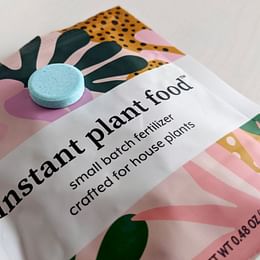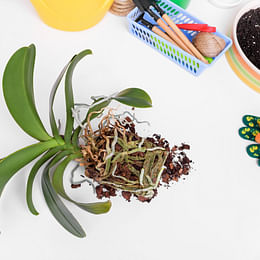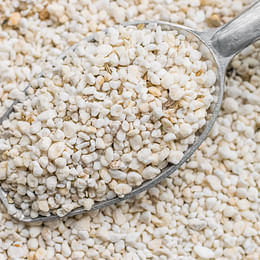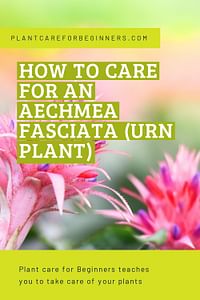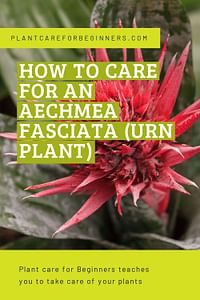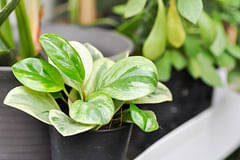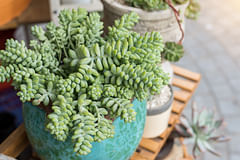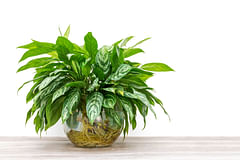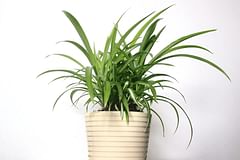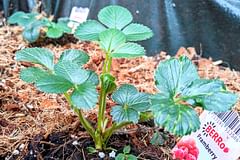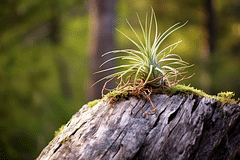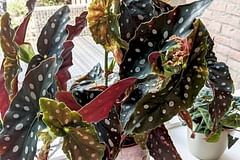How to care for an Aechmea fasciata (Urn Plant)
Learn how to care for your Aechmea fasciata (Urn Plant)! Brighten up any room with its beautiful flower. This plant is easy to maintain and non-toxic to pets or children, so you don't have to worry about their safety. Get tips on sunlight, water, fertilizer, humidity & pests here!
Last updated on:
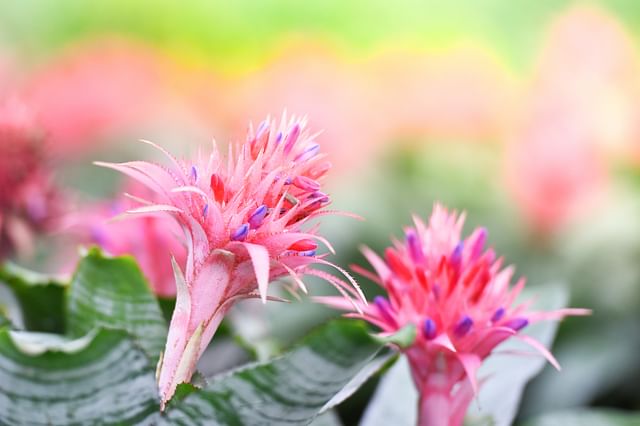
The Aechmea fasciata, also known as the urn plant or Silver vase plant, is a stunning tropical houseplant from the Bromeliads family. It has patterned leaves with a bright-colored flower and an almost sculptural form. This colorful plant from southeastern brazil might look a lot like a Sansevieria, but it isn't related to it and needs different care to thrive in your house.
In this plant care guide, we'll look a little closer at how we can take care of this unusual-looking plant. I will help you learn how to take care of an urn plant if you already have one or are thinking of getting one. By following the simple steps in this plant care guide, you help your urn plant stays happy and healthy in your house!
These are the topics we're going to look at when it comes to taking care of the Urn plant:
Let's dive right into it and help your Urn plant thrive in your house!
How often should you water an Urn plant?
In the introduction, we found out that this plant grows in southeastern Brazil, more specifically, in the rainforest. This natural habitat tells us a little bit about what type of water this Bromeliad prefers.
Like many tropical plants, the Urn plant prefers to be growing in moist, but not soggy soil. On average, you should water this plant once every 7-10 days, but always make sure to check if the top 2cm (1 inch) of the soil is dry to the touch before you water it.
This plant is quite sensitive to overwatering, so it's best to check the soil before you water it. Some plants prefer to be watered a little bit every day or so, but the Urn plant does better when you water it thoroughly once per week or so.
How do you water the Urn plant?
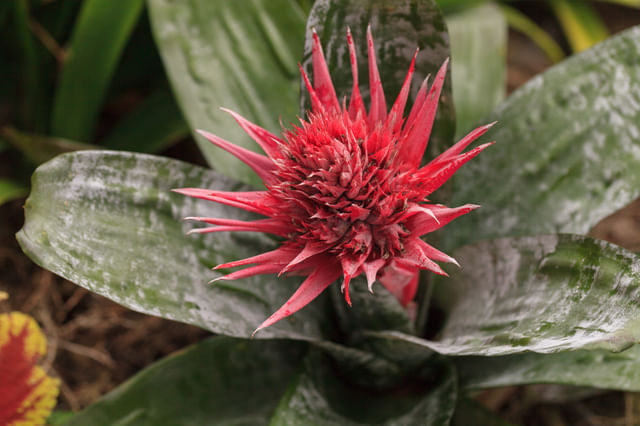
The Urn plant has another nickname, the Silver Vase plant. It has this nickname because the plant is shaped like a vase. This is not by accident, as it uses its shape to capture rainwater and water itself from this "vase".
So what does that mean for watering this plant? It means that you should let the plant do most of the watering for you and add water to the "vase" of the plant, rather than only to the soil. The plant will absorb the moisture from the center vase and from the soil at the same time.
You can use tap water for watering this plant, but only if that water is also safe to drink. If not, you will have to use filtered or distilled water to water your Urn plant.
Replace the water from the "vase" every 2 weeks to make sure it doesn't develop any rotting in the center of the plant. In the winter, it's best to not add any water to the vase at all and only water your plant by adding moisture to the soil.
How much sunlight does an Urn plant need?
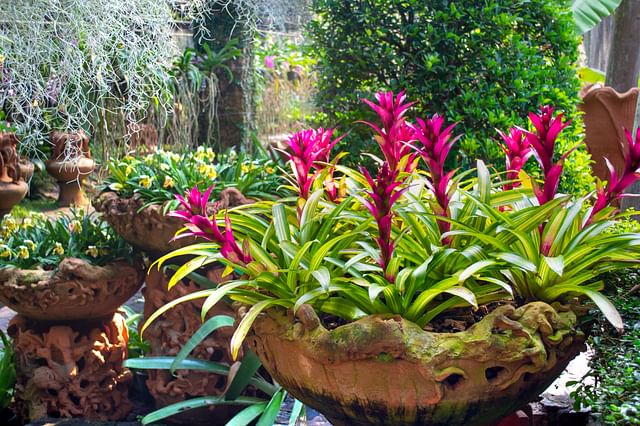
As we've discovered, the Urn plant naturally grows in the rainforests of Brazil. It's not a very tall plant, so it often grows under tall trees where it only gets filtered sunlight. To help it get this same type of sunlight in your house, make sure you place your Urn plant in a spot that gets medium to bright, indirect sunlight.
This spot gives your plant enough energy to grow, but won't expose it to any direct sunlight. When your Urn plant is exposed to too much direct sunlight, its leaves will be scorched. If this happens to your plant, move it away from the window and make sure you don't expose it to direct sunlight anymore.
What is the ideal temperature range for growing an Urn plant?
Many houseplants are called "houseplants" because they thrive in the environment that most houses offer your plant. The Urn plant thrives in temperatures ranging from 18°C (65°F) - 24°C (75°F), which is a normal temperature for most houses.
You likely won't have to change anything in your house to make it a great place to grow your Urn Plant. Just keep it away from drafts and extreme changes in temperatures, as this could shock your Urn plant. In extreme cases, this can kill your houseplant.
How much humidity does an Urn plant need to thrive?
The Urn plant is a tropical plant, so it prefers higher levels of humidity than most other houseplants. A good rule of thumb is that your Urn plant should get between 40-50% humidity in its environment.
If your Urn plant gets too little humidity, it can cause the leaves to dry up and become brittle. Anything above this range can be too much for the plant to handle and can often lead to root rot because the soil is too humid.
If the humidity in your living space is too low, you can increase it to help your Urn plant thrive. You can increase it by misting it directly with water every few days, placing your plant on a pebble tray, or using a humidifier.
It's also important to make sure your Urn Plant gets enough air circulation so it doesn't get too stagnant and stuffy. Make sure to keep them away from radiators or vents, as these can create an overly dry environment for your plant.
When and how often should you fertilize your Urn plant?
You've already learned a lot about giving your Urn plant the optimal environment to grow in your house, but we're still missing one key part of this: fertilizer.
To help your Urn plant grow, you'll need to fertilize it once per month with a diluted liquid fertilizer in the spring and summer. During the fall and winter, you shouldn't fertilize your Urn plant, because it won't grow as much and won't use the fertilizer.
If your plant doesn't use the fertilizer you provide it with, it'll stay behind in the pot and could cause chemical burns on your plant's roots over time. This could kill your plant, unfortunately. This is why you should only fertilize your Urn plant in the spring and summer.
The best kind of fertilizer for an Urn plant is one that is specially formulated for bromeliads or epiphytes. Such fertilizers typically contain lower levels of nitrogen than traditional houseplant fertilizers, as too much nitrogen can damage the leaves of these plants. However, you can still use a balanced liquid fertilizer to help your plant grow.
When you're fertilizing your Urn Plant, make sure it is evenly distributed around the entire base of the pot but not in direct contact with any leaves or flowers on the plant. It's also important to water your plant a little before applying fertilizer if the soil is dry because this will help the nutrients be absorbed more quickly.
What is the best soil for growing an Urn plant?
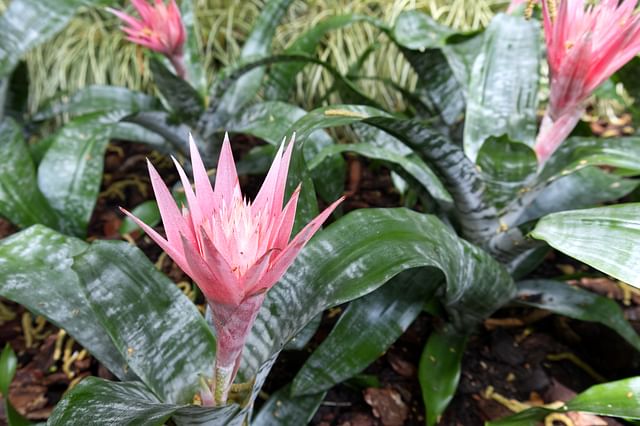
The best soil for growing an Urn plant is a well-draining potting mix. The well-draining potting mix helps to prevent overwatering your Urn plant and drains the excess moisture to the bottom of the pot quickly. Ideally, your pot has a drainage hole, so the excess water can't cause any root rot.
A great mix for potting soil for an Urn plant is 1/2 potting soil, 1/4 perlite, and 1/4 orchid bark. This mixture holds onto enough moisture for your Urn plant to thrive, but also drains any excess moisture quickly.
The potting soil holds onto the moisture for several days, which helps to water your plant. The perlite and bark add structure to the mixture, which is very important for plants that prefer to grow in moist soil. The perlite and bark also make the potting mix drain excess moisture more quickly.
Potting mix with a good structure is important because the soil will want to compact over time. This prevents oxygen from reaching your plant's roots and prevents excess moisture from draining to the bottom of the pot. The structure keeps the soil light and airy.
How can I help an Urn plant to grow its flower?
The Urn plant is known for its beautiful flower, so it's normal to want to help your plant grow its flower. Fortunately, there are a few steps you can take to help the process along.
First, make sure you meet the ideal temperature range for growing an Urn Plant. As we've discussed, this should be between 18°C (65°F) and 24°C (75°F).
Next, make sure your Urn plant is getting enough sunlight. It prefers indirect sunlight, so place it in a spot that gets medium to bright, indirect light.
Finally, make sure to regularly fertilize your Urn plant during the growing season. This will help your plant grow its flower and stay healthy during it.
Do you need to prune an Urn plant?
The Urn plant grows a bright and colorful flower that stays bright and colorful for many months at a time. When the flower starts to turn brown, it has died and you can deadhead or prune this flower. This pruning doesn't just make your plant look better, it also helps to preserve its energy.
When the flower has died, it's time for your Urn plant to grow pups. In the next section, we'll look at how you can propagate these pups and grow them into new plants. To help the plant grow these pups, you'll want to prune the dead flower. By pruning the dead flower, the plant can use the excess energy and nutrients to grow these pups.
When pruning your Urn Plant, use sharp pruning shears or a knife to carefully remove any yellowed or dead leaves and the flower. This will help keep the plant looking neat and encourage new growth.
It's important to note that frequent pruning or deadheading can sometimes cause stress for your Urn Plant and should only be done if there is no other way to keep your plant healthy.
After your Urn plant has grown its flower and it has died, it's time to propagate the baby plants. Let's look at how we can do that!
How do you propagate an Urn plant?
After the parent plant's flower has died, it will refocus its energy on growing the pups. Eventually, the parent plant will die. This is why you should propagate the baby plants and grow new plants.
When your Urn plant has started growing baby plants, you should wait until they're large enough to cut off. You can cut them off when they're at least 12cm (5 inches) long.
Once you've cut off the pup, make sure to remove any dead leaves. Then, put the pup into a slightly larger container using a mixture of 1/2 soil and 1/4 perlite, and 1/4 orchid bark. This will help keep your Urn plant's new roots aerated so it can grow strong.
Finally, water the newly potted plant regularly and provide it with medium, indirect sunlight. In a few weeks, the first new roots should start growing and you've successfully propagated your Urn plant.
How often should you repot an Urn plant?
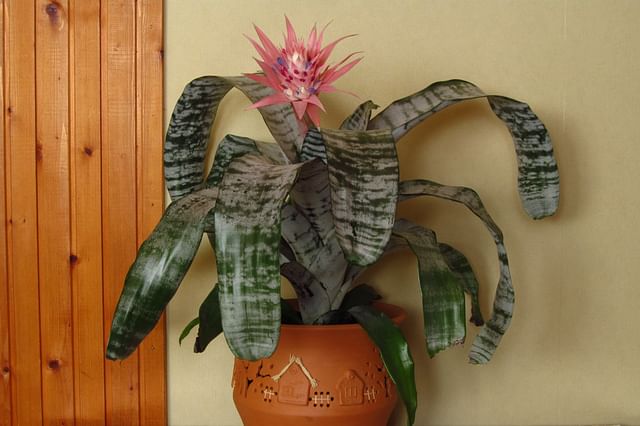 An Urn plant, like most other houseplants, needs a pot that's slightly bigger than its root ball. In the first year or two after propagating a pup, you should regularly repot your plant to give it enough space to grow.
An Urn plant, like most other houseplants, needs a pot that's slightly bigger than its root ball. In the first year or two after propagating a pup, you should regularly repot your plant to give it enough space to grow.
On average, you should repot your Urn plant once every two years or whenever it has outgrown its current pot. When repotting, be sure to use a slightly larger pot with good drainage and use a fresh, well-draining potting mix. Additionally, try to disturb the roots only as much as needed when transferring the plant from its current pot into the new one.
What are some common pests that affect an Urn plant?
Urn plants are tough plants and luckily aren't very susceptible to pests. However, there is always a chance that a pest finds your Urn plant and decides to stay around. Common pests that can affect an Urn Plant include mealybugs, aphids, spider mites, and scale.
Mealybugs are small white insects that are often in clusters around the plant's stem and leaves. They can cause yellowing of the leaves and can also attract ants and other pests. To get rid of mealybugs, use a cotton swab dipped in rubbing alcohol to target these pests directly.
Aphids are tiny green insects that feed on the sap from the leaves of your Urn Plant. These pests can cause young leaves to curl up and discolor, as well as stunt new growth. To get rid of aphids, you can wipe them off with a damp cloth or spray them with a diluted solution of water and liquid dish soap every two weeks until they're gone.
Spider mites are very tiny spiders (less than 0.3mm in size) that spin webs between the stems of your Urn Plant and feed on its sap. These pests can cause yellow spots on the plant's leaves, premature leaf drop, wilting, and overall discoloration of foliage. To get rid of spider mites, try spraying them down with a strong jet of water or using an insecticidal soap specifically designed for this type of pest control.
Scale is another common pest for Urn Plants, which appear as tiny yellowish or brownish bumps on the plant's stems and leaves. These pests feed on the plant juices and excrete sticky honeydew onto its foliage which can lead to sooty mold if not dealt with quickly. To get rid of scale, you can spray it directly with insecticidal soap and repeat this every few days.
Is an Urn plant toxic to cats and dogs?
The Urn plant is not poisonous to either pets or humans. This makes it a great choice for a houseplant to get if you have curious kids or pets.
Conclusion
Caring for an Urn Plant is easy and fun! Make sure to give it medium, indirect sunlight each day, water it regularly, use fertilizer only during the growing season and prune any dead or dying leaves as needed. With proper care, your Aechmea fasciata will grow a beautiful flower in its urn-shaped center, brightening up any room. Plus you don't have to worry about pets getting hurt because this plant isn't toxic to cats or dogs.
Share this plant care guide with your friends and family so they can learn to take care of their Urn Plants too!
Thank you for reading this post! I hope it helps you to keep your plants healthy and beautiful! If you're looking for more guides on specific plants, you can always request a plant guide to get a guide for the plant you have trouble with.
Tags: beginner-friendly, Plant care tips, moisture-loving, pet-friendly
Posted on: Feb 11, 2023